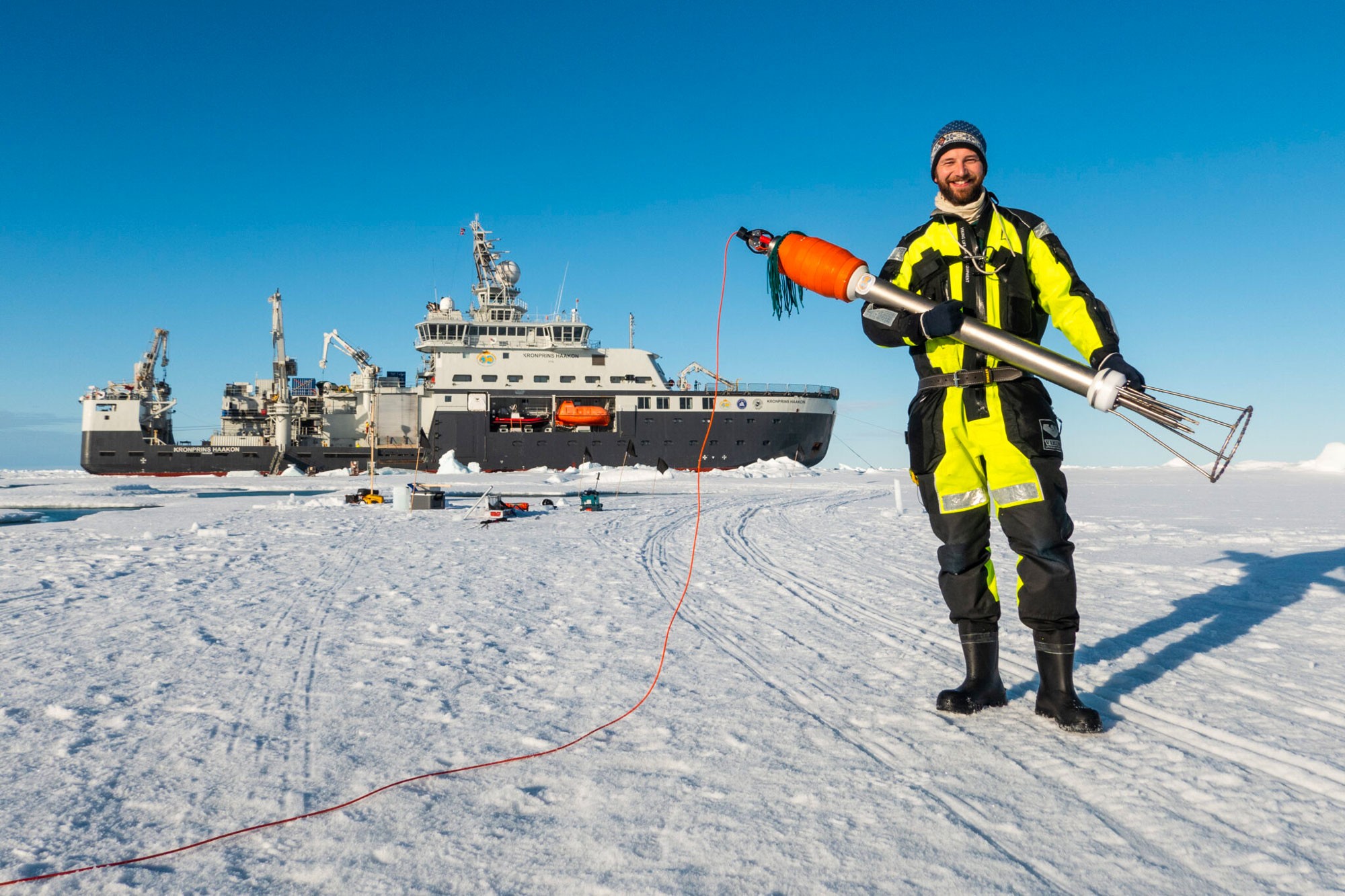
Sustainable development of the Arctic Ocean
By: Paul Dodd and Agneta Fransson // Norwegian Polar Institute, Lis Jørgensen and Anne-Britt Sandø // Institute of Marine Research, Maaike Knol-Kauffman, Jack Landy, Jan Jakub Solski and Vito De Lucia // UiT The Arctic University of Norway, Eva Leu // Akvaplan-niva, Janne Søreide // University Centre in Svalbard, Keguang Wang // Norwegian Meteorological Institute
SUDARCO, a new Fram Centre research programme to provide the knowledge needed for the Sustainable Development of the Arctic Ocean, began this year with a focus on the little-explored southwestern parts of the Nansen and Amundsen Basins. These basins are largely beyond national jurisdiction yet make up a substantial part of the large Central Arctic marine ecosystem.
SUDARCO will assess:
- How accessible are the different parts of the area today and how will this change?
- What is valuable and what is vulnerable in this area?
- What regulation exists in the area today; will it be adequate in the future, and how can it be changed?
Answering these questions requires a multidisciplinary approach with close collaboration between natural and social scientists arranged in eight different work packages.
Contributing to a sustained observing system
Due to ongoing changes, an updated understanding of the ice conditions, the structure and composition of the water column, and the biodiversity of the ecosystem is required. This is the focus of SUDARCO’s four natural science work packages, which collected a suite of measurements this summer, and left behind two moored ocean observatories that will collect ocean and sea ice measurements continuously until they are recovered in 2024.
ADVERTISEMENT
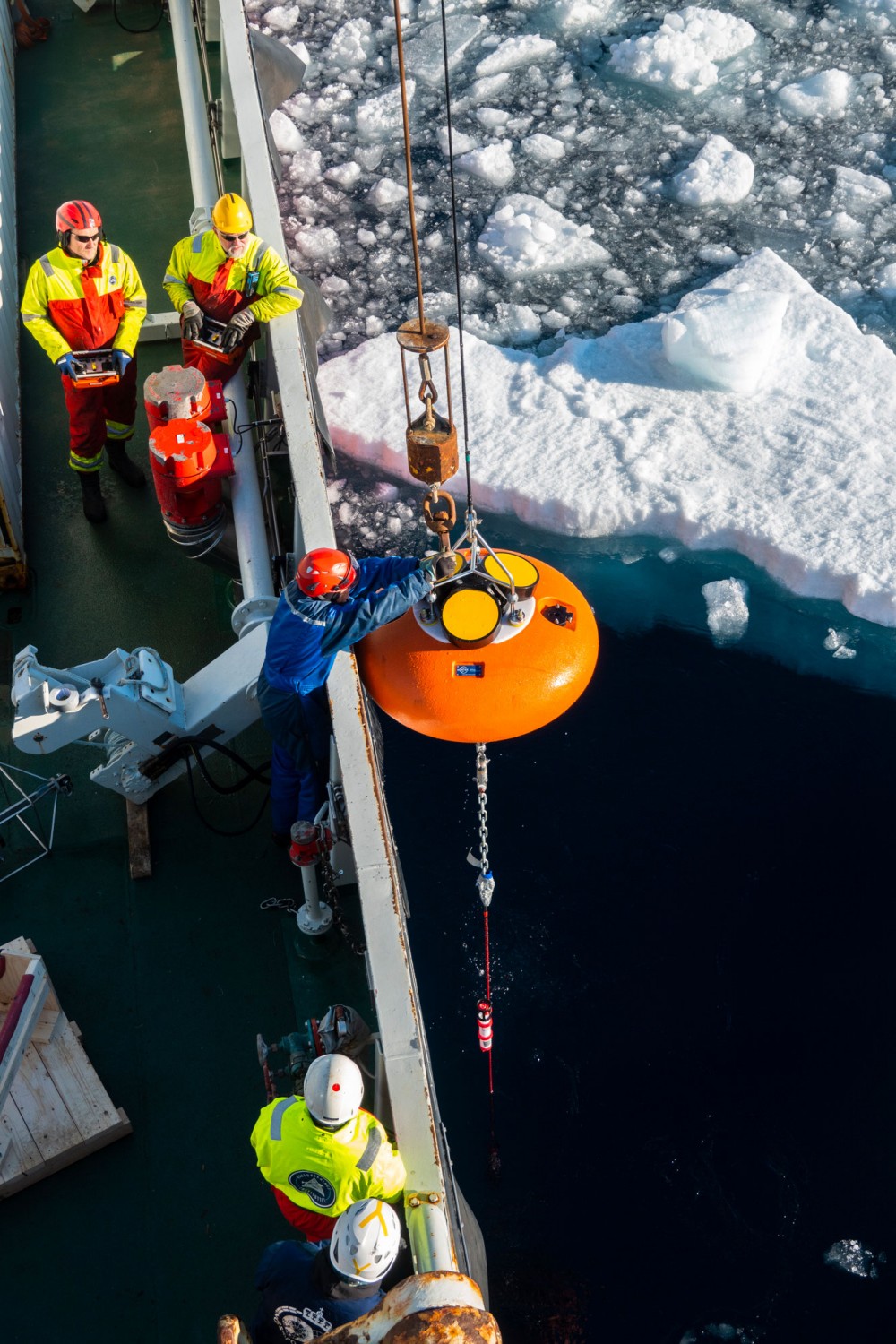
The accessibility of the Central Arctic is largely determined by sea ice conditions and a key task is to produce improved sea ice classification products using numerical model simulations and by combining data from different types of satellite sensors. These new products will be validated using sea ice thickness measurements collected by instruments deployed on the moorings left behind this summer.
Important physical oceanographic processes include ocean stratification and vertical mixing, which regulate the transport of heat and nutrients from deep Atlantic water masses up to the surface, where heat affects sea ice, and nutrients potentially affect primary production. A dense section of hydrographic, current, and turbulence measurements collected this summer will allow SUDARCO to investigate these processes and to study how horizontal transports associated with the large-scale ocean circulation are changing. The Nansen Basin is directly influenced by the warm, salty West Spitsbergen current which originates in the North Atlantic, while the Amundsen Basin is strongly influenced by the cool, fresh Transpolar Drift current which originates on the opposite side of the Arctic Ocean. The water biogeochemistry is affected by these currents, which are variable in composition. We therefore expect to find differences in nutrients, carbon chemistry, ocean acidification, biodiversity, contaminants, and plastic pollution in these two basins.
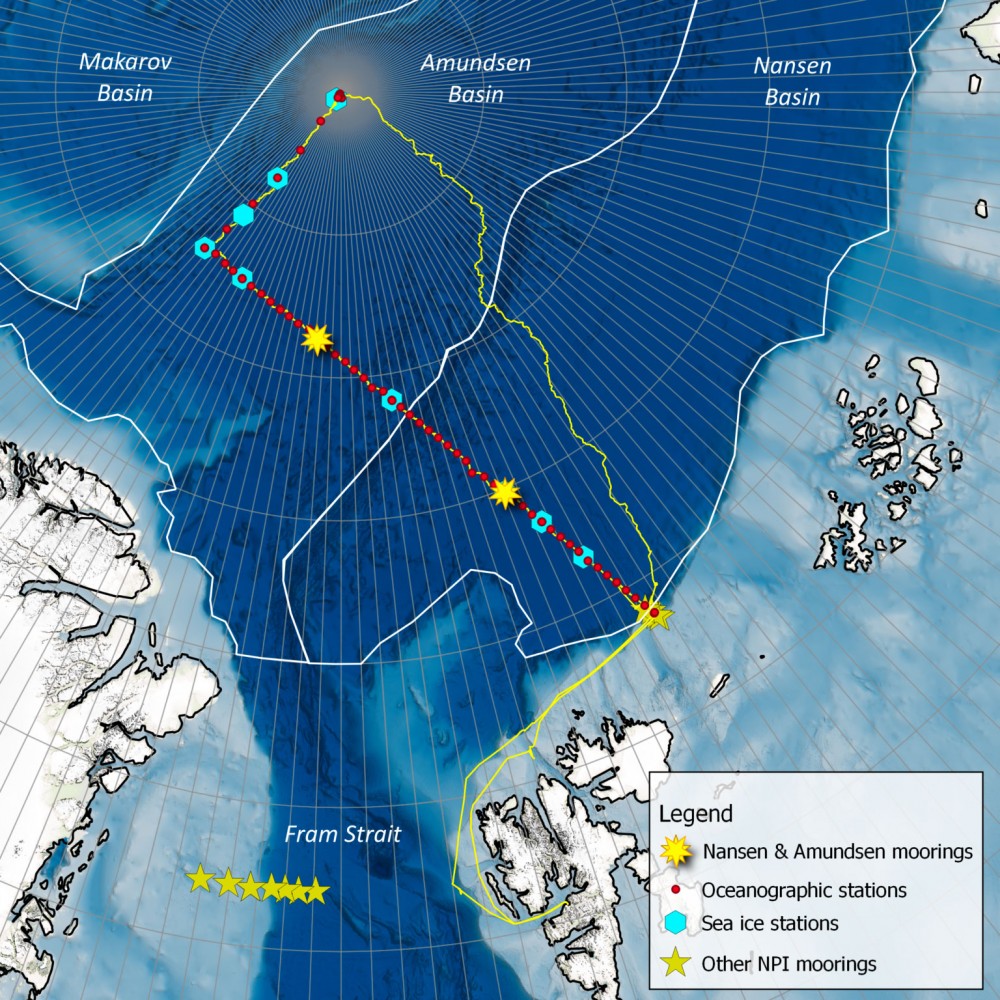
In addition to classical approaches within taxonomy and ecology, biodiversity and species distribution are being assessed using environmental DNA, which provides an objective (and cost-efficient) way to monitor whole community biodiversity, changes, and invasive species. Automatic water samplers deployed from the new moorings will provide year-round information from the Central Arctic marine ecosystem, where very few measurements have been made outside of the summer field season. Meanwhile, passive acoustic recorders will listen for vocalising marine mammals such as bowhead and narwhals, and sediment traps close to the sea bed will be used to study seasonal variations in the biodiversity of material sinking down from the surface layer and to estimate carbon sequestration in the sediments associated with biological activity.
The central Arctic moorings will be serviced in 2024 and again in 2026 when the section of shipboard measurements will also be repeated. These sustained observations at fixed positions are unique in the region and will be valuable for assessing the extent of ongoing changes.
Model simulations
Arctic sea ice is one of the most sensitive components of Earth’s climate system. It has been undergoing dramatic reduction in the satellite observation period, and is projected to be essentially ice-free (sea ice area < 100 km2) before 2050 by the latest climate models, so we expect to observe this change within the next 30 years. Nevertheless, retreat of the sea ice also provides new opportunities for access to the central Arctic, facilitating tourism and shipping, among other activities. The main purpose of our modelling studies in SUDARCO is to enhance the Norwegian preparedness for this activity, by improving short-term sea ice and ocean predictions, and by improving the understanding of long-term processes related to the physical, biogeochemical, and ecological changes around the Norwegian Arctic.
For this purpose, a suite of different models are used. Changes in ocean heat and freshwater content are crucial for the primary production. To investigate future effects of climate change and northward extension of sub-Arctic habitats, downscaled future projections from several regional models will be executed. Based on emission estimates, properties of chemicals, environment and food webs, simulations of the contaminant concentrations and pathways across compartments in the Arctic ecosystem will be predicted. For operational use on shorter time scales, remote sensing and near-real-time in-situ observations of sea ice thickness will be integrated into an assimilative ocean and sea ice model based on the METROMS framework. In parallel, METROMS will be run with biogeochemistry and lower trophic level ecosystem components for eddy-resolving scenarios in the geographical focal area.
New human activity
While there is a lot of talk about the expected increase in maritime activities in the Arctic, we know relatively little about how these transformations will occur, what their central drivers and barriers are, and not least, what the human and environmental risks associated with these changes are.
Current human activities in the southwestern Nansen and Amundsen Basins are still mostly limited to research and surveillance. However, the Arctic has become a destination of “last chance tourism”. Increasingly, expedition tourism vessels – of which growing numbers will be ice strengthened – might explore the frontiers of the Arctic. With respect to fisheries, target species may shift geographically, and there are indications that fishing activity is moving northwards due to reductions in sea ice and the poleward shift of commercially important fish species. Still, however, fishery activity in the high Arctic is constrained by factors such as quota management, remoteness, available infrastructure, and operational conditions. Moreover, a moratorium on fishing in the central Arctic Ocean has been agreed until 2037.
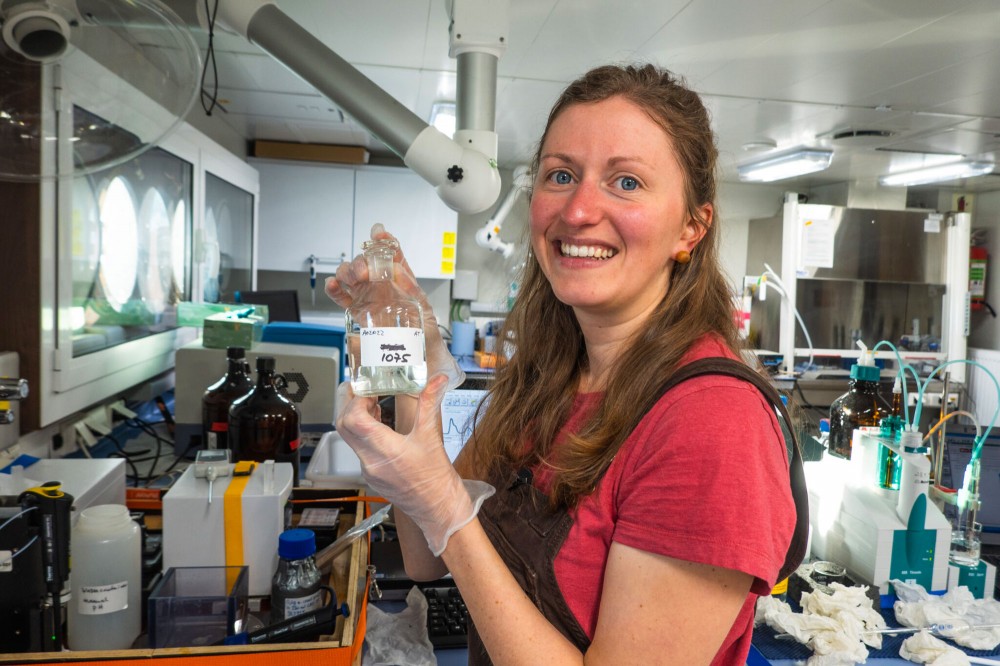
SUDARCO will investigate activity trends, their drivers, barriers, and implications. This will be done through a combination of qualitative work and the use of vessel tracking and environmental data. We will develop insights about current and past trends within various sectors (e.g., research, surveillance, tourism, shipping, and fisheries), but will also gain insight into expectations for the future. Another aspect of this work is that we will focus on how human activity in the Arctic Ocean is enabled or constrained by factors such as the existing regulatory frameworks (e.g., the Polar Code), available infrastructure, and operational conditions (e.g., weather and sea ice). In addition, SUDARCO will develop in-depth knowledge about the human and environmental risks associated with increased human activity. Ultimately, the project will lead to a comprehensive, integrated risk assessment in close connection with stakeholders. This will be an important basis for a reassessment and refinement of frameworks for sustainable governance.
Governance and regulatory framework
The governance of the Arctic Ocean is complex and fragmented. While the key instrument is the 1982 UN Convention on the Law of the Sea (UNCLOS), it is complemented by a dynamic system of regional, sectoral and global instruments and governance arrangements.
Rapid environmental change and sea ice retreat thrust the Arctic Ocean into the global spotlight as the location of intensified economic opportunities and environmental threats. These processes pose significant challenges to existing legal and governance frameworks, bodies, and institutions. Additionally, a new global treaty on the conservation of marine biodiversity in areas beyond national jurisdiction has reached the final stages of negotiation. Once entered into force, this treaty will likely have significant implications for ecosystem governance in the central Arctic Ocean. In parallel, the prospects for sustainable governance of the Arctic Ocean will largely depend on the ability of the relevant actors to cooperate. New geopolitical developments, such as the emergence of new actors with Arctic interests and, more recently, the war in Ukraine, raise important questions about the future of Arctic environmental governance. All these developments pose significant challenges to the implementation of ecosystem-based management and raise issues as to the effectiveness of existing measures, tools, and mechanisms. The research that will be carried out on the governance and regulatory framework will seek to provide a better understanding of the challenges to the governance regimes, with the view of offering insights and recommendations on effective ways to implement ecosystem-based management on the Arctic region in a complex regulatory and geopolitical situation.
SUDARCO project structure showing the eight work packages and key links between them:
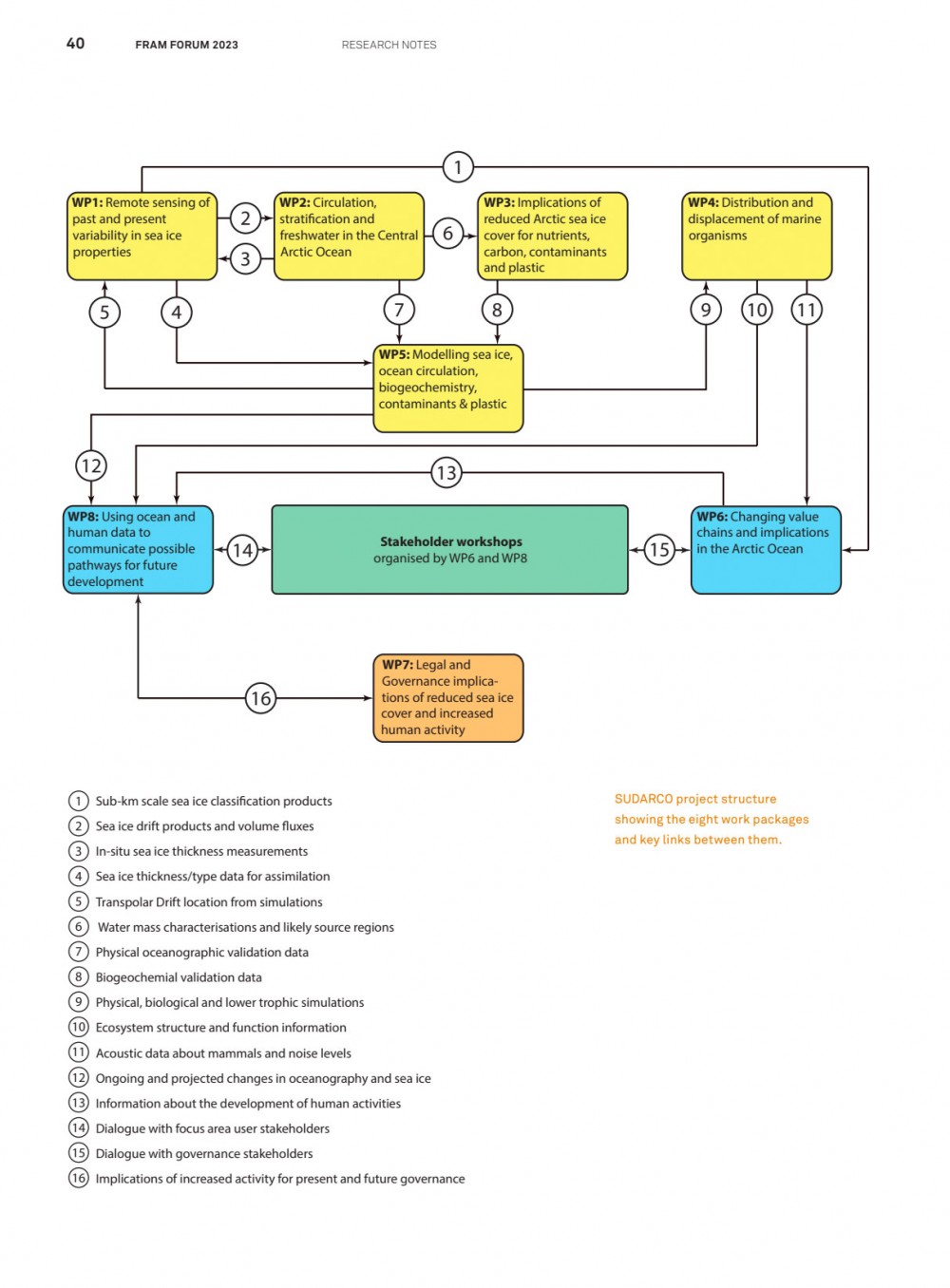
Further reading
ICES/PICES/PAME Working Group on Integrated Ecosystem Assessment (IEA) for the Central Arctic Ocean (WGICA) (2020) Jorgensen LL, Saitoh S-I (Eds) Ices Scientific Reports 2(79) 144 pp, https://www.pame.is/images/05_Protectec_Area/2020/PAME-II/EA/EA-EG_Pre-M...
Lemelin H, Dawson J, Stewart EJ, Maher P, Lueck M (2010) Last-chance tourism: The boom, doom, and gloom of visiting vanishing destinations. Current Issues in Tourism 13(5): 477-493, https://doi.org/10.1080/13683500903406367
This article was originally published by the Fram Forum
The Barents Observer Newsletter
After confirming you're a real person, you can write your email below and we include you to the subscription list.


